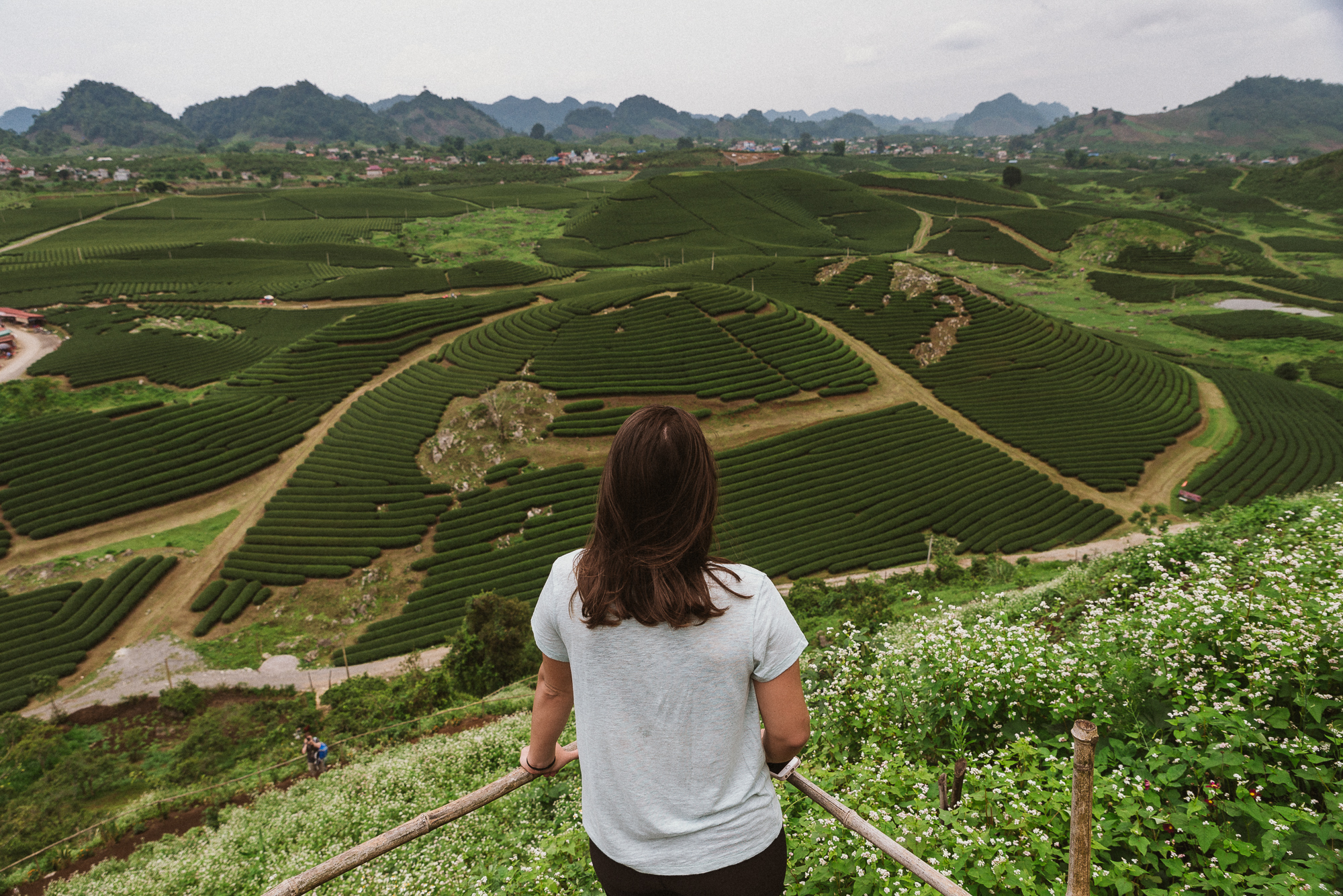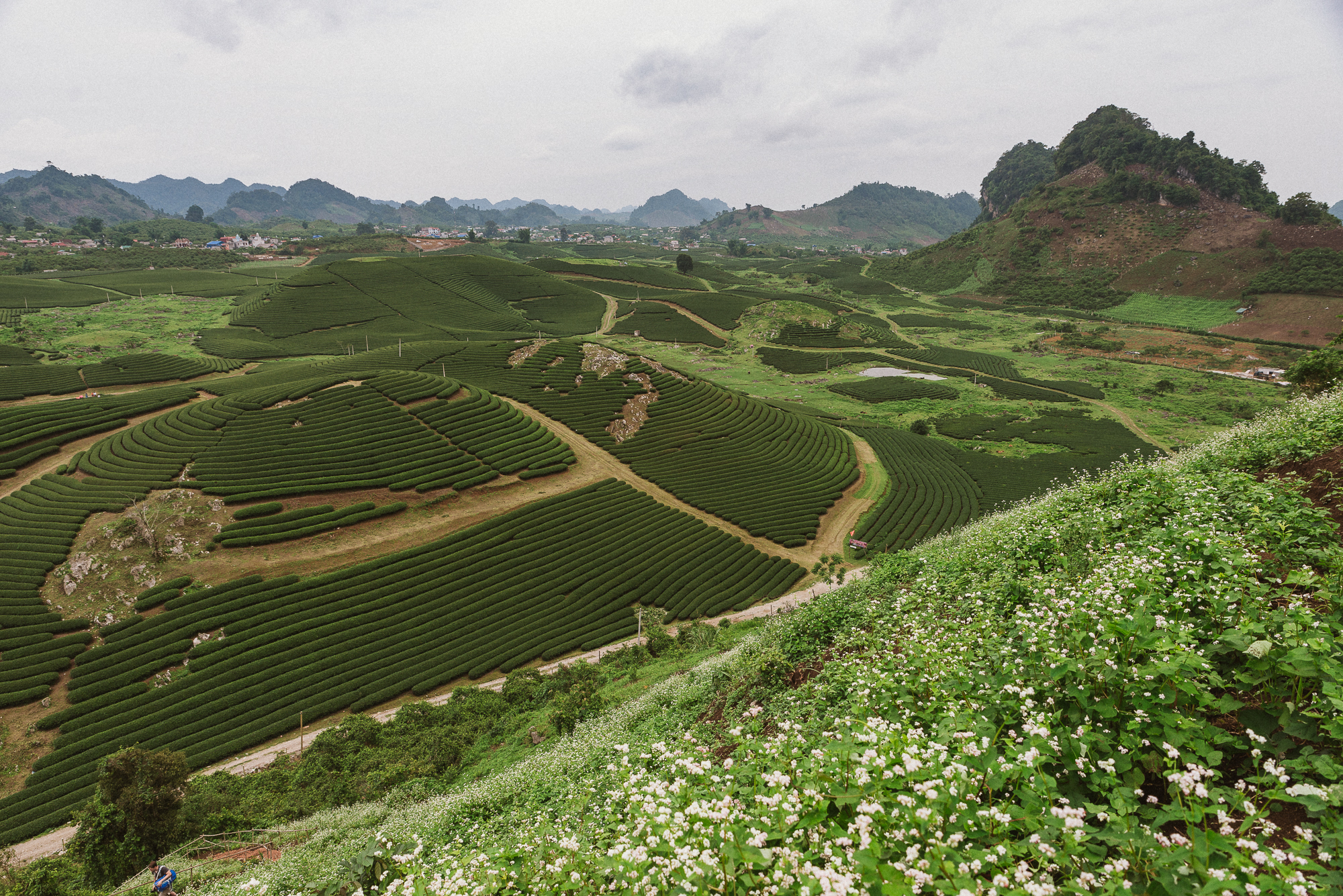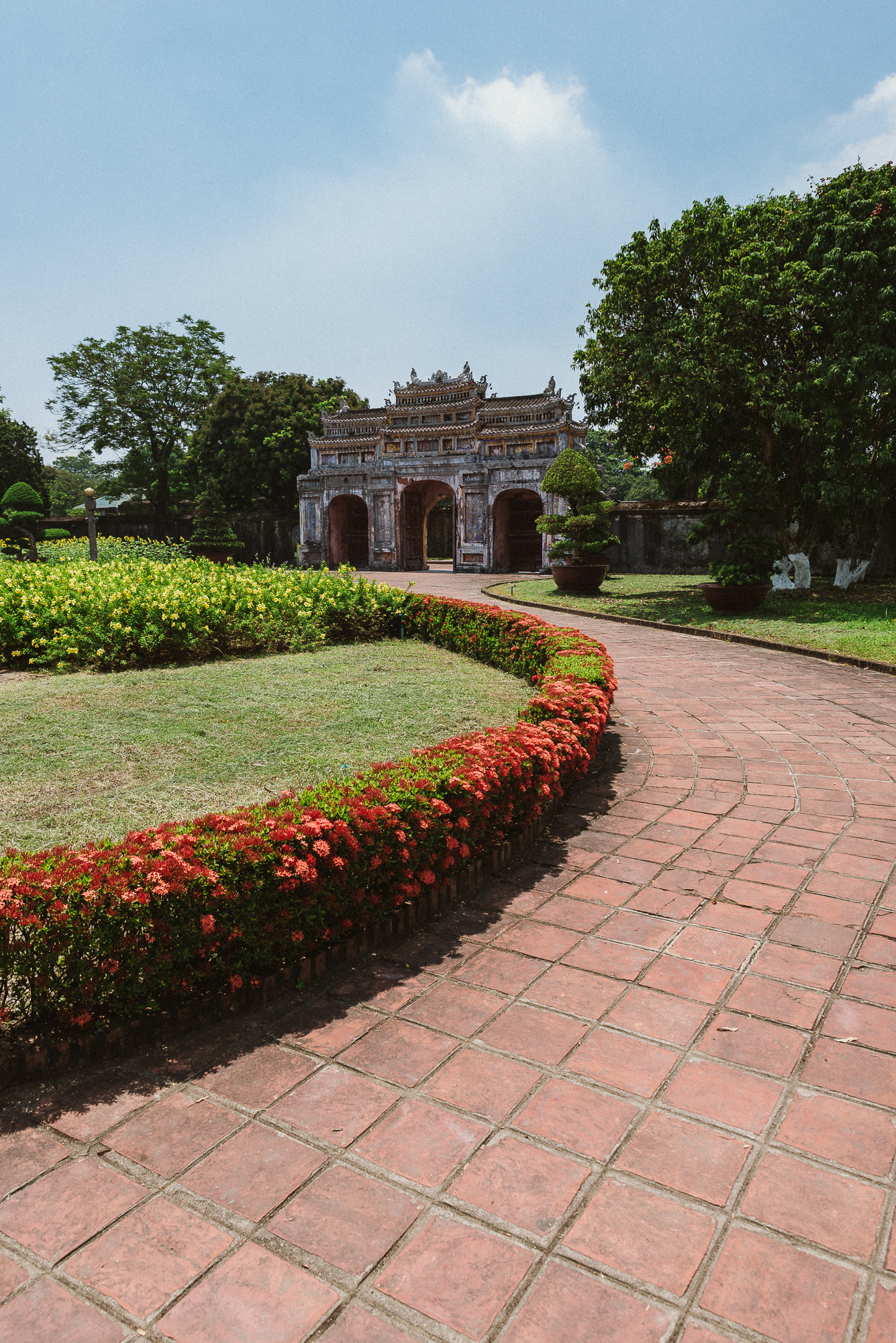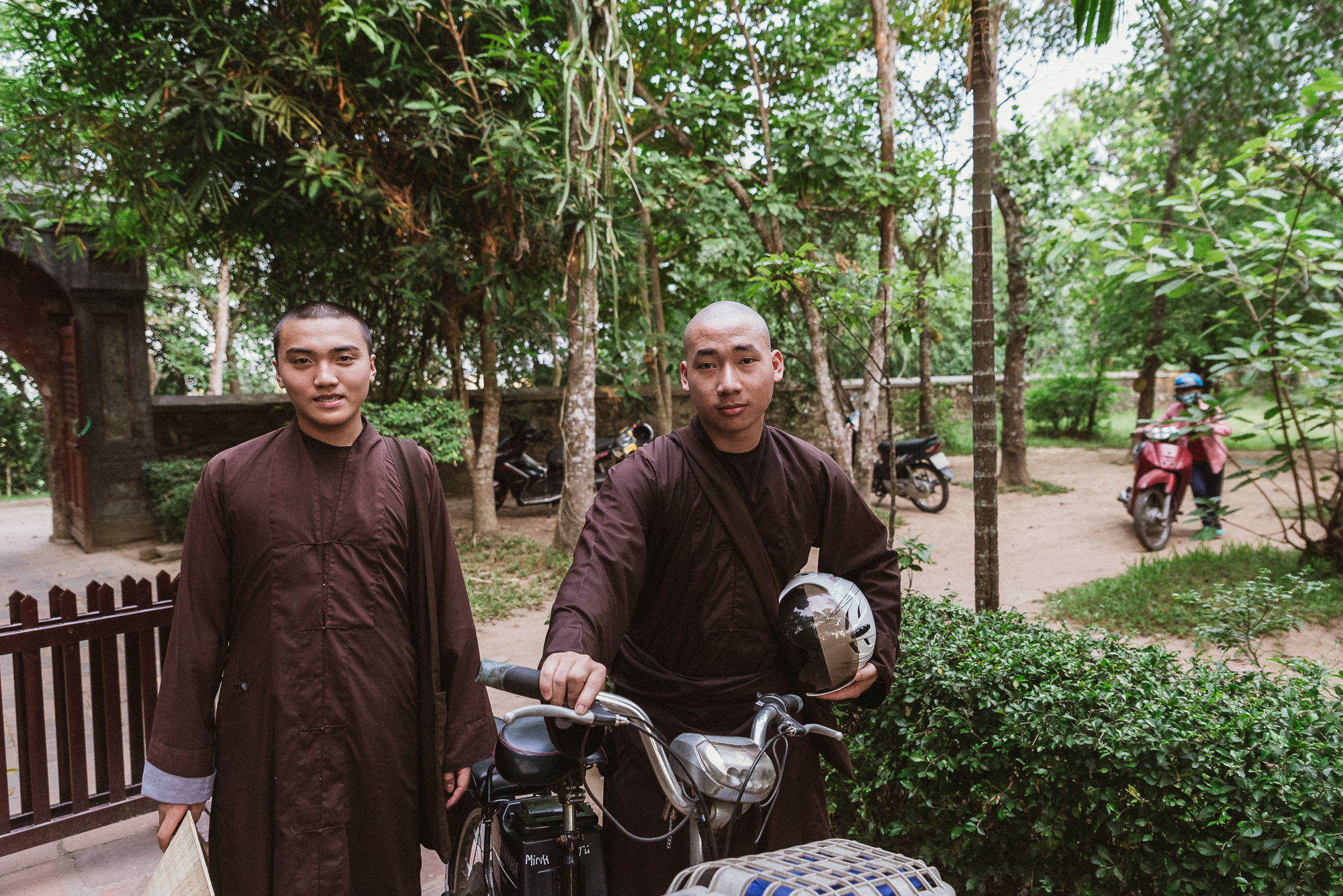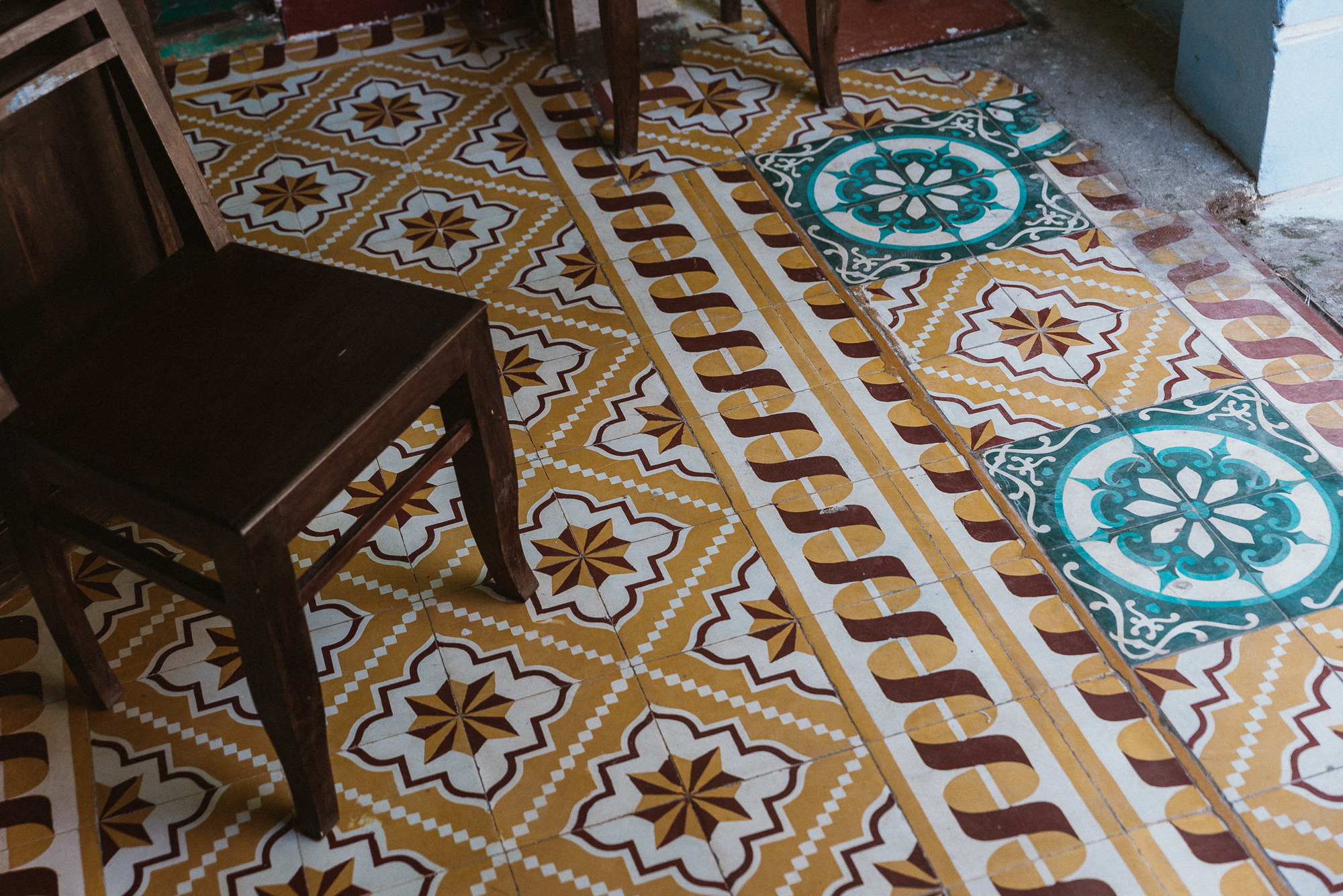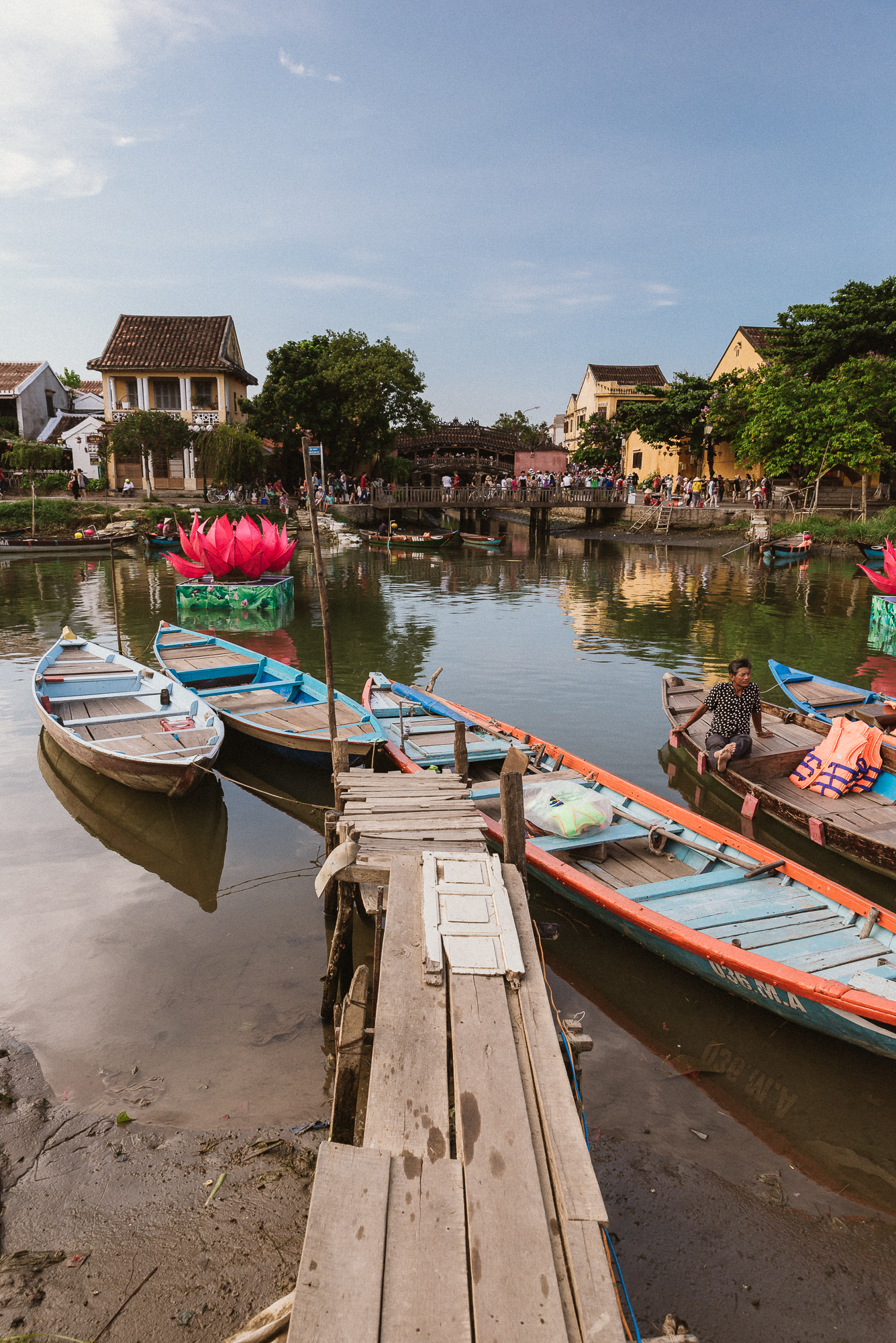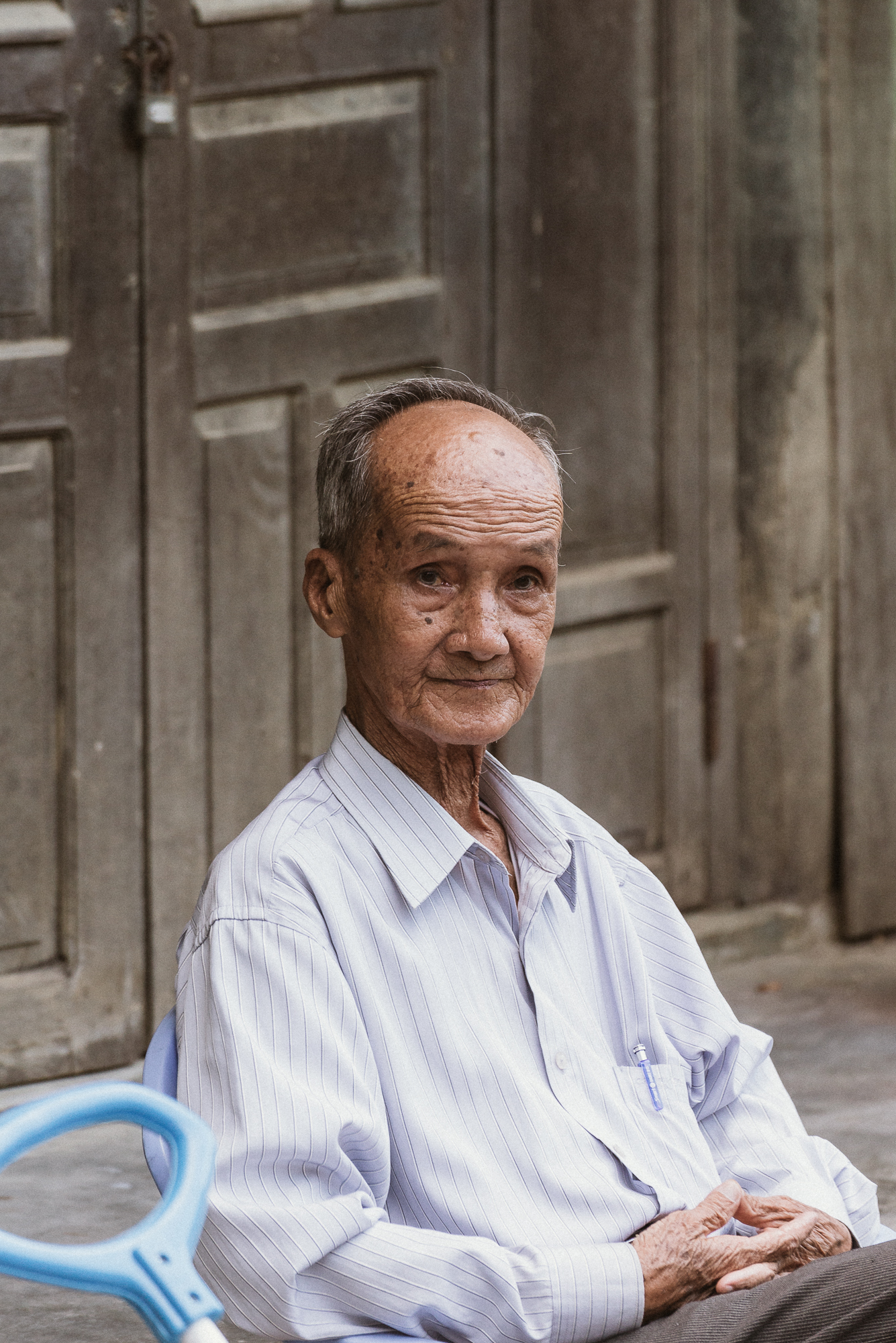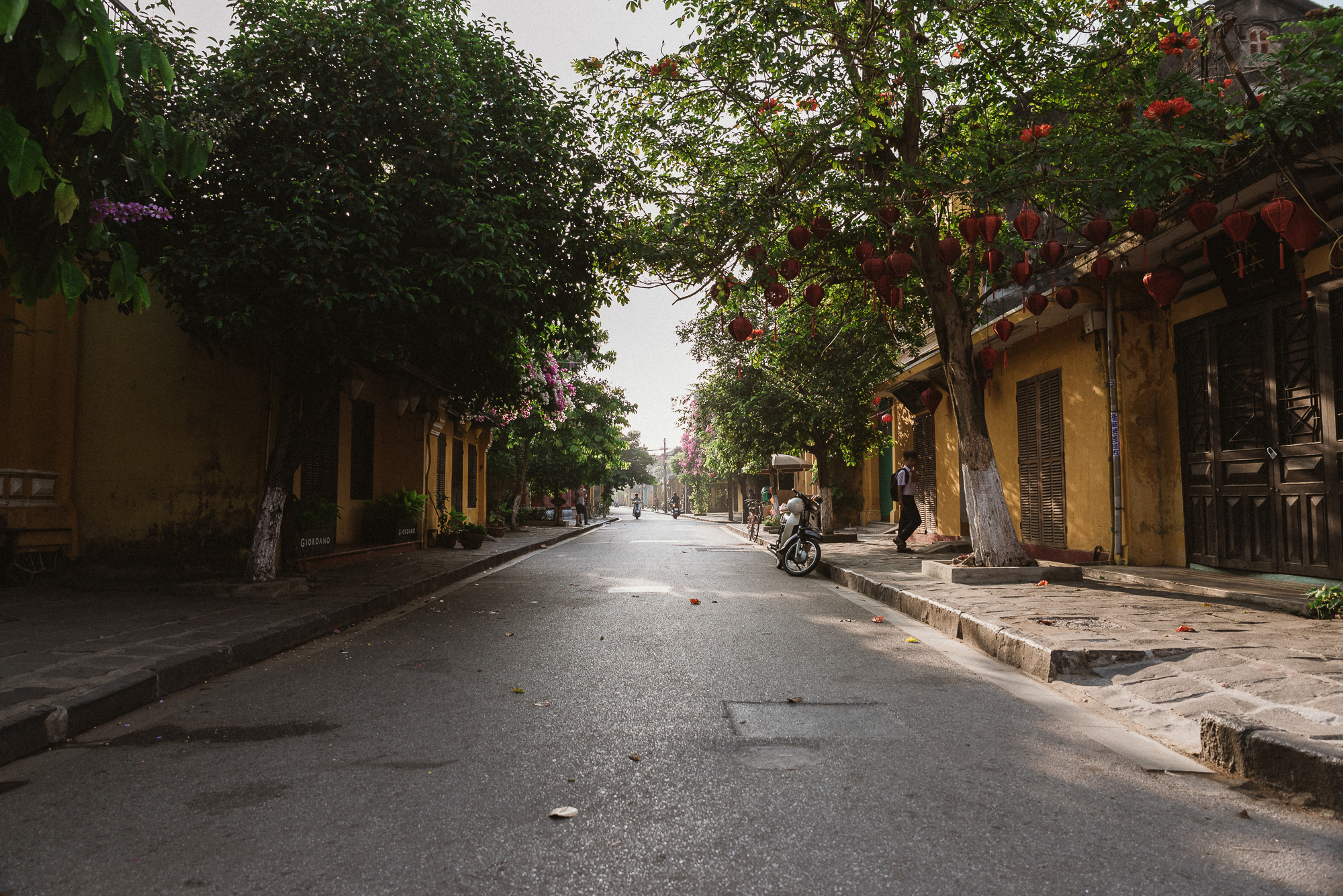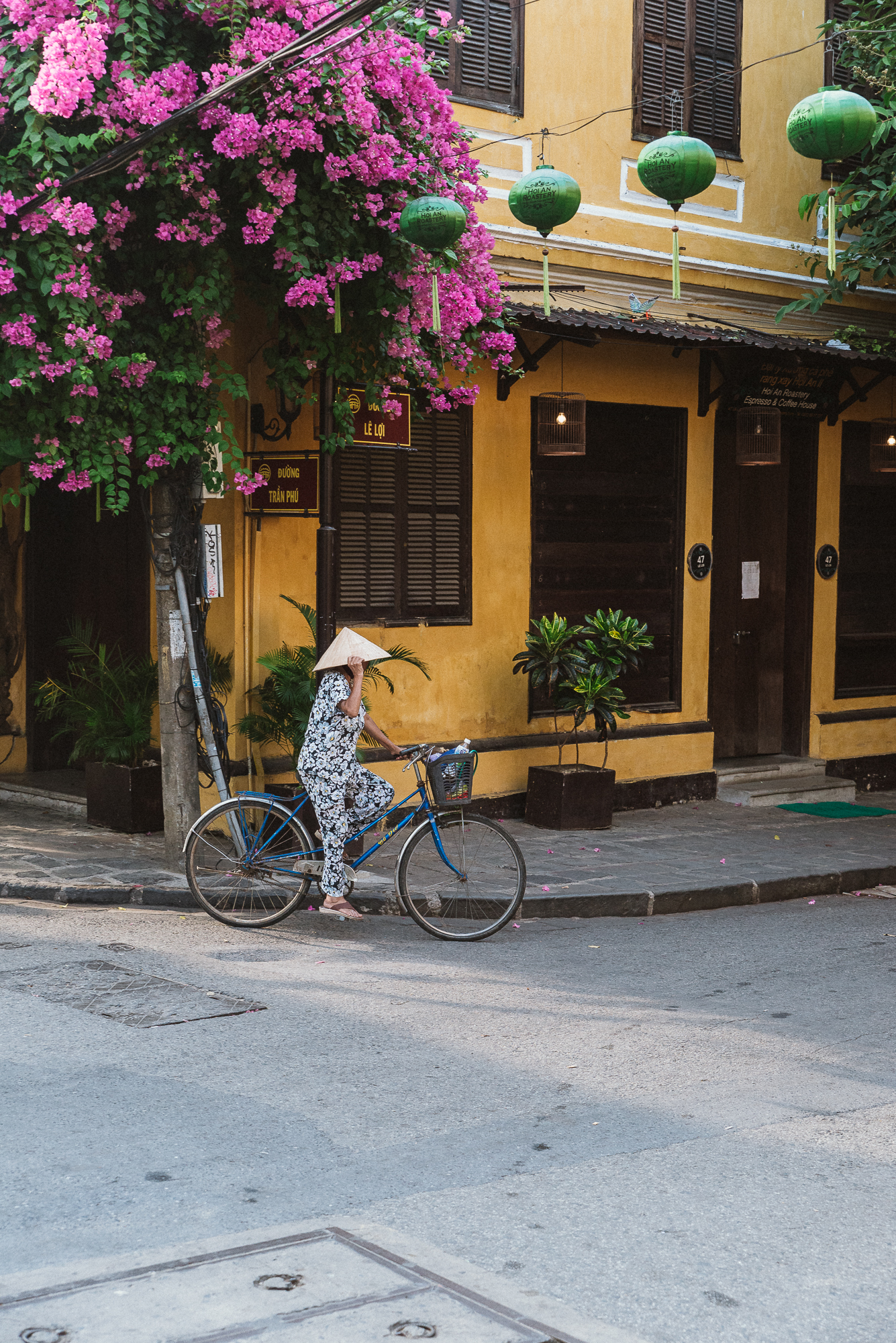Ninh Binh
A bus took us from Cat Ba directly to Tam Coc, the picturesque village often featured in Ninh Binh photos. We stayed at Mua Caves Ecolodge, located just below the famous viewpoint. Our time in Ninh Binh was quite relaxed, though we had a bad soup for dinner that led to some discomfort.
On our first day, we climbed the viewpoint, which involved about 500 stairs. Despite the intense humidity, the view was incredibly rewarding.
Over the next few days, we explored the rice fields and temples on scooters. At Thai Vi Temple, I met a friendly bearded monk who kept stroking his beard. When I mimicked his gesture, he smiled and playfully claimed to be Ho Chi Minh!
Bich Dong Pagoda was particularly impressive, featuring an ancient three-tiered design. We climbed about 100 stairs and explored dark caves that link the pagodas, each with various statues. The surrounding countryside views were beautiful.
The next day, we decided to take a boat ride on the Tam Coc River. The view from above was stunning, so we hopped on a boat to explore the river’s many caves. A kind lady paddled us through the scenic route while teaching us Vietnamese words for the animals we encountered—everything from birds and frogs to pigs enjoying a bath.
Moc Chau
The ecolodge staff arranged a great deal for a direct ride from Ninh Binh to Moc Chau, saving us time and hassle with multiple bus changes. Moc Chau was meant to be our first northern stop before heading to Mu Cang Chai, but poor weather and some health issues kept us from reaching that far.
Unfortunately, our Moc Chau homestay was a major disappointment despite its high rating. With numerous "Moc Chau homestays" in the area, finding ours was a challenge. The room was extremely humid, the beds were just wooden planks, and when the rain started, a waterfall poured in through a hole in the wall. They attempted a fix with a cardboard box, but it was ineffective. On the plus side, the older couple running the homestay were incredibly kind and friendly, even though we had to rely on Google Translate to communicate. The only word they knew was "happy". Despite the accommodation, the surrounding landscape was stunning, with tea fields stretching as far as the eye could see.
On our second day, we moved to the only proper hotel in the area, desperately needing a clean room and a decent bathroom. The hotel also had a good restaurant, which was a relief since finding a meal elsewhere was quite challenging. The local street vendors were grilling dogs so yeah ... We tried checking TripAdvisor, but the top-rated restaurant was closed, and the second one wouldn’t serve us for some reason.
We later found a friendly driver who took us to a larger tea plantation. The area, home to various ethnic minorities, was lively with Hmong girls playing among the tea bushes. Moc Chau appears to be a spot many tourists overlook, as we mostly saw locals and Vietnamese visitors. The green tea hills were definitely a highlight of the trip.
Then came an intense day of travel. We decided to head back south, so we woke up at 3 am and took a transfer from Moc Chau to Hanoi airport. After catching an early flight to Hue, which was delayed by about an hour, we finally arrived in the afternoon.
Hue
We stayed at Hotel La Perle, which was fantastic—clean rooms, friendly staff, and an amazing breakfast. The area around the hotel was lively and offered the best selection of restaurants we encountered, even better than Hoi An.
After a restful break, we explored Hue on foot, starting with the Imperial City, the former capital of Vietnam. Passing through the citadel entrance, we came across an old war museum featuring aircraft and tanks. The Imperial City's architecture was unique, and while it wasn't very crowded, the heat was nearly unbearable.
Perched on a hill overlooking the Perfume River, 4 km southwest of the Citadel, Thien Mu Pagoda is a striking seven-story, 21-meter-high octagonal tower. Renowned as one of Vietnam's most beautiful and well-preserved religious sites, its construction began in 1601 and was expanded and renovated over the centuries.
Hoi An
Since we shortened our northern itinerary, we extended our stay in Hoi An. Our first hotel was Cristina's Hoi An, located in Tra Que village, just north of the old town on a charming little island. This green village, known for its local farming, provided some of our favorite meals.
Cristina's Hoi An was by far our top stay. New, spotless, and with a spacious room, it offered a great pool and exceptional staff. Although the restaurant had a small menu, each dish was excellently prepared. Breakfast was generous, featuring a banh mi station—a delicious Vietnamese sandwich with a baguette filled with various savory ingredients like veggies, eggs, and grilled pork.
We took our hotel’s bicycles to An Bang Beach but were disappointed by the crowds and the overall experience. Hoi An's old town, however, proved to be a better destination. We wandered through the charming streets multiple times, discovered cozy spots for coffee, and even had suits tailored.
One of our favorite spots in Tra Que village was Kumquat BBQ. We enjoyed their cooking class, where the chef demonstrated how to make their various sauces. We learned to prepare fried spring rolls, chicken chili, three-spice chicken, salad, and dressing. It was a fantastic experience.
My Son temples
We met another excellent Grab driver who took us on a sunrise trip to My Son, a UNESCO World Heritage site. This cluster of Hindu temples, built between the 4th and 14th centuries AD, is dedicated to the god Shiva. The morning was stunning, and we arrived early to enjoy the peaceful site before the crowds.
After four days at Cristina's, we moved to Atlas Hotel due to an earlier reservation. Although Atlas wasn’t as nice and cost more, its location close to the old town was a significant plus.
In Hoi An, we especially enjoyed The Hill Station, a charming spot with excellent service, and The Espresso Station, known for the best egg coffee. Phin Coffee offered another top-notch coffee experience with a knowledgeable owner, while Nu Eatery impressed with its original menu and fantastic food. The best places often hide off the main streets, so wandering through the narrow alleys can lead to unique and memorable finds!
Morning walks through Hoi An's old town were my favorite. The streets were just beginning to stir, shops were still closed, and there were no tourists around. We also visited the morning market, which was bustling with smiling vendors and vibrant produce.
Vietnam turned out to be quite different from what we expected. It's less developed than we imagined, which isn’t necessarily a bad thing. However, the climate was intense—unlike anything we’d experienced in our other Asian vacations. We usually enjoy the heat, but it was just overwhelming here.
One common complaint about Vietnam is the attitude of its people, but this was far from our experience. The locals were incredibly kind and honest. For instance, I was given cash back when I accidentally overpaid. A generous driver in Hoi An, who became our friend after just a couple of rides, charged much less than our hotel transfer and refused a tip. People were never pushy; once we said no, they respected it. Their pride is evident, but they’re definitely not rude.
The food, however, was a bit of a letdown for me. Maybe my expectations were too high, or perhaps it’s just not my preference. That said, I could happily eat banh mi for a month.
I’m disappointed to have missed out on the north, so if I return, I'd love to explore the northern rice terraces and mountain passes by motorbike.


















































